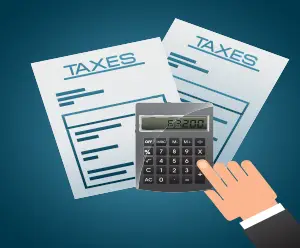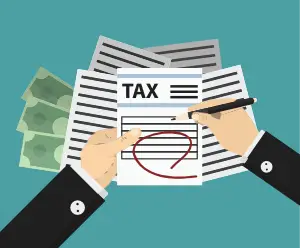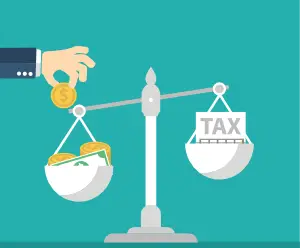
Understanding the IRS Substitute for Return
Click to ask Mike Ask Mike The Internal Revenue Service (IRS) Substitute for Return (SFR) is a term many taxpayers

One of the most upsetting experiences one might go through is the possibility of the Internal Revenue Service (IRS) seizing their tax refund. This guide aims to delve into the intricacies of tax refund seizure, offering insights into common reasons behind such actions, the crucial CP49 Notice, and a detailed exploration of the strategic Offset Bypass Refund (OBR) as a means of resolution.
Facing the possibility of a tax refund seizure involves understanding the various circumstances that can lead to such actions. Commonly referred to as Refund Offset, adjusted refund notice, Tax refunds seizure, and Refunds seizure, this process is triggered by reasons such as unpaid income tax, past-due child support payments, defaulted student loans, and other financial obligations.
At the core of the tax refund seizure process is the issuance of a CP49 Notice. This official communication from the IRS informs individuals that their tax refund has been adjusted to settle an existing tax liability. The CP49 Notice signifies that a portion or the entirety of the tax refund has been redirected to pay off the tax debt, a crucial piece of information for those navigating the complexities of the tax system.
Disagreeing with a CP49 Notice opens a 60-day window for dispute. Initiating the dispute process involves contacting the phone number provided on the CP49 notice and constructing a compelling argument for why the IRS should not confiscate the tax refund. This phase emphasizes the importance of supporting documents that substantiate the claim of not owing the tax debt, providing individuals with a valuable opportunity to prevent the IRS from seizing their tax refund well in advance.
In cases where a tax refund is withheld to pay a spouse’s debt, exploring an Injured Spouse Relief claim becomes relevant. This relief option allows individuals to recover their share of the tax refund from a joint tax return. Particularly valuable when there is no personal tax debt but the IRS seizes a portion of the tax refund to settle a spouse’s tax debt, filing jointly and exploring Injured Spouse Relief can provide a means to secure a portion of the refund.
If the IRS seizes only a portion of the tax refund to completely pay off a previous tax debt, and there is a surplus remaining, individuals are entitled to receive the remaining amount. No further action is required to obtain the surplus. For instance, if one owed the IRS $400 and the tax refund was $1000, the IRS would issue a tax refund check of $600.
The Offset Bypass Refund (OBR) emerges as a strategic tool for individuals seeking to prevent a tax refund from being solely applied to an existing federal tax debt. This process, however, comes with a crucial condition – the IRS will only accept an offset if seizing the taxpayer’s refund would cause a financial hardship. It is imperative to understand that the OBR process is specific to preventing a refund from being used to pay off existing tax debt and requires a compelling demonstration of financial difficulty.
Navigating the complexities of IRS tax refund seizure involves a comprehensive understanding of the reasons behind the offset, the significance of the CP49 Notice, the dispute process, and potential relief options such as Injured Spouse Relief. The Offset Bypass Refund (OBR) serves as a specialized tool for those facing financial hardship, offering a strategic approach to prevent a refund from being solely applied to existing federal tax debt. By being proactive, informed, and following the steps outlined in this guide, individuals can enhance their ability to dispute and potentially prevent tax refund seizures, fostering a more favorable resolution with the IRS. If the IRS seizes your tax refund, click here for instructions.
You can now ask our AI assistant any questions you have about your tax debt or any tax-related issues. Whether you’re unsure about payment plans, need clarification on penalties, or want information on how to resolve your tax situation. Our AI is ready to assist you with all your tax-related concerns.

By interacting with our AI assistance, you agree to our terms & conditions. Enjoy our AI Tax Assistant responsibly.
Ask me any questions...
Related Posts

Click to ask Mike Ask Mike The Internal Revenue Service (IRS) Substitute for Return (SFR) is a term many taxpayers

Click to ask Mike Ask Mike The Internal Revenue Service (IRS) Substitute for Return (SFR) is a term many taxpayers

Click to ask Mike Ask Mike The Internal Revenue Service typically operates within a 10-year window, commencing from the

Click to ask Mike Ask Mike The Internal Revenue Service (IRS) operates within specific timeframes dictated by statutes of limitations

Click to ask Mike Ask Mike understanding the ins and outs of the 10-year statute of limitations (SOL) is essential.
Recent Posts

Click to ask Mike Ask Mike The Internal Revenue Service (IRS) Substitute for Return (SFR) is a term many taxpayers

Click to ask Mike Ask Mike The Internal Revenue Service (IRS) Substitute for Return (SFR) is a term many taxpayers

Click to ask Mike Ask Mike The Internal Revenue Service typically operates within a 10-year window, commencing from the

Click to ask Mike Ask Mike The Internal Revenue Service (IRS) operates within specific timeframes dictated by statutes of limitations

Click to ask Mike Ask Mike understanding the ins and outs of the 10-year statute of limitations (SOL) is essential.
Disclaimer: This is educational content, not legal, accounting, or tax advice.
This is a tax debt resource website, not to be used in lieu of a tax attorney or for legal advice. All information, Ai chat responses, articles, materials, and content are intended to inform users on a variety of tax topics. In no way is it intended to be construed as accounting, legal, tax, other services or advice. This site is not intended to be used to avoid tax penalties or tax debt that may be imposed by law. Terms and Conditions. Your use of this site constitutes acceptance of the following terms and conditions.
This is a tax debt resource website, not to be used in lieu of a tax attorney or for legal advice. All information, Ai chat responses, articles, materials, and content are intended to inform users on a variety of tax topics. In no way is it intended to be construed as accounting, legal, tax, other services or advice. This site is not intended to be used to avoid tax penalties or tax debt that may be imposed by law. Terms and Conditions. Your use of this site constitutes acceptance of the following terms and conditions.
© 2023 · Tax Debt Monster, Inc. All rights reserved

For all Tax Professionals that would like to partner up with us. By partnering with us, you’ll help us connect and make a positive impact in the tax community. Partner up with us and receive a complimentary Ai Tax Sidekick to help support your clients at no cost! Click here if you’re interested in our Partner-Up program

By interacting with our AI assistance, you agree to our terms & conditions. Enjoy our AI Tax Assistant responsibly.
How may I help you with your tax issue?